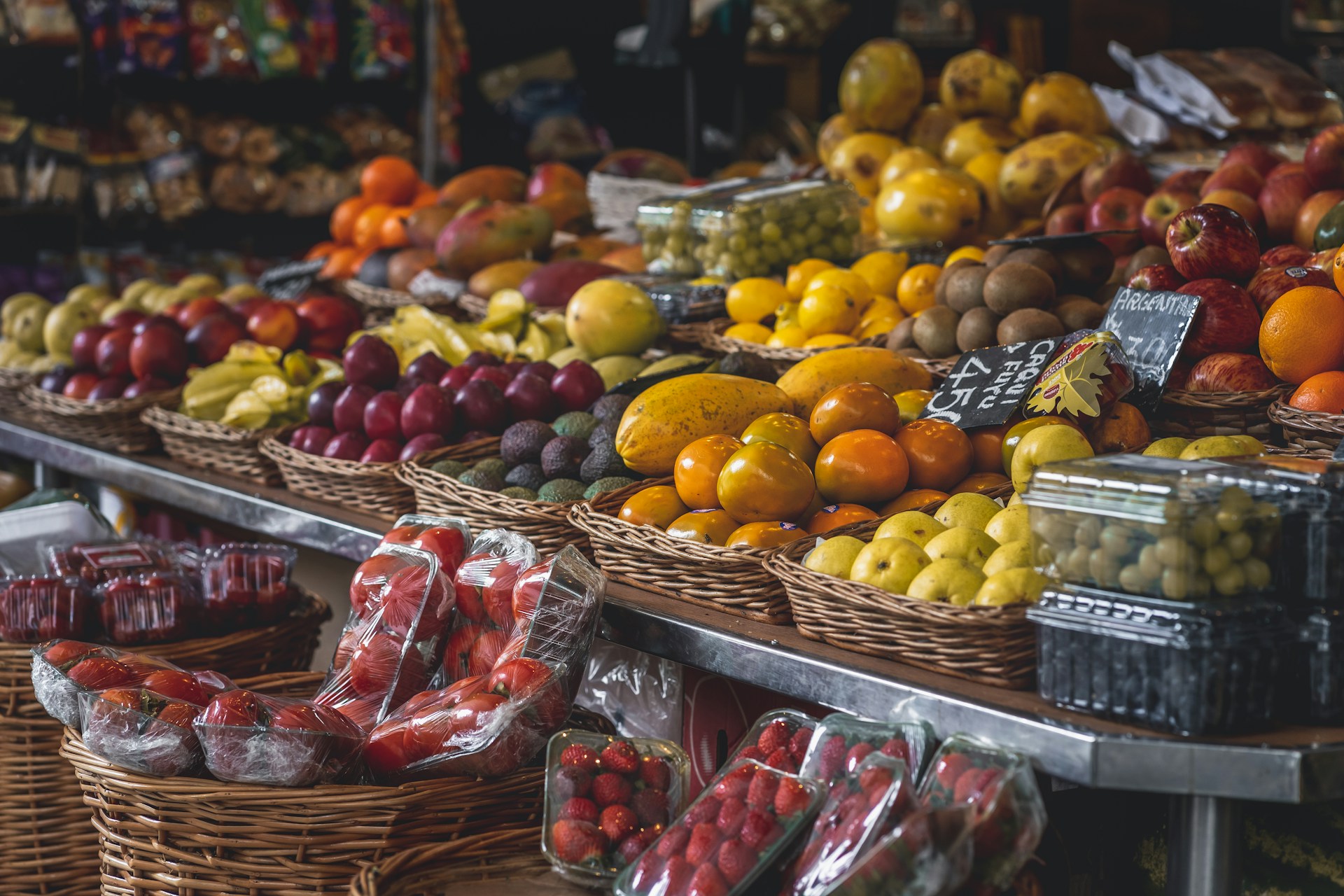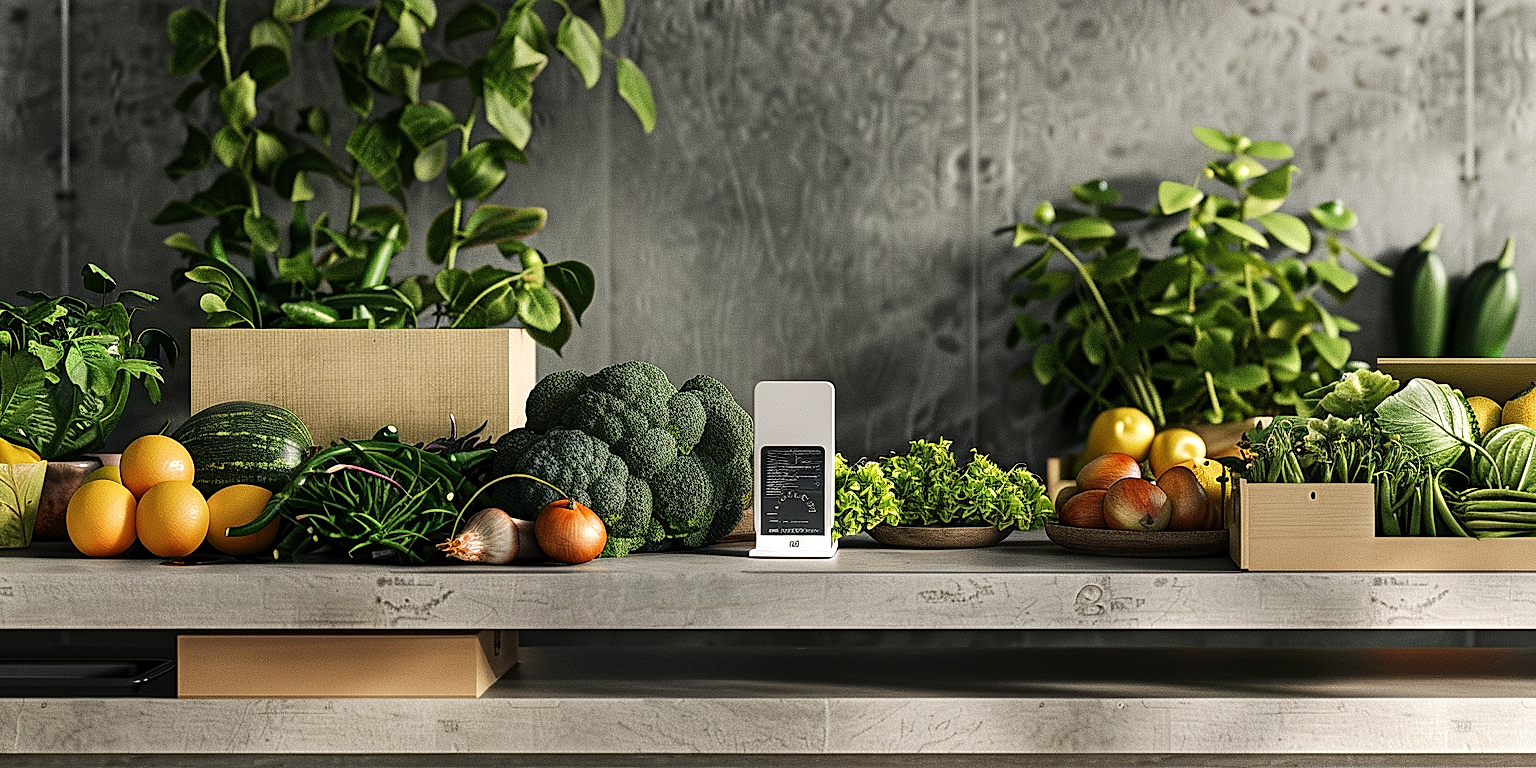Understanding the freshness of produce is essential for any retailer in the food industry.
Knowledge of quality assurance can drive customer satisfaction, repeat business, and overall profits.
While most falsely assume that one must be an industry expert to ascertain the freshness of fruits, vegetables, or other produce, there are discernible indicators.
These signals aid in determining whether a food item is still in its prime or past its date.
Aiding in the detection of these indicators can result in reducing waste and increasing the quality of goods on the shelves.
This article will delve into these useful cues, demystifying the process for any retail entrepreneur.
Contents
Indicators Of Produce Freshness For Retailers
1. Vibrant, Consistent Coloring
The color of fresh produce is one of the most noticeable indicators of its quality.
As fruits and vegetables ripen and develop, they change color, transitioning from less vibrant shades to deeper and more uniform colors.
For example, unripe bananas will be green, but as they ripen, they become a more vibrant yellow, eventually developing brown spots when they may be too ripe.
Tomatoes also shift from green to a bright, uniform red when they’re ready to be picked and enjoyed.
This vibrant coloration is not accidental but due to the phytochemicals that plants produce as they mature.
The vibrancy and consistency of a fruit or vegetable’s color can give a retailer insightful information about its stage of ripeness and overall freshness.
If you’re finding that the color of a produce item is uneven, dull, or faded, this could be a sign that it’s no longer at its peak freshness.
Similarly, if a fruit or vegetable displays discoloration or color changes, it may be starting to spoil or deteriorate.
However, it’s essential to keep in mind that not all color changes are negative indicators.
Some fruits and vegetables will change color when exposed to air or light as part of their natural oxidation process.
But these color changes due to oxidation do not necessarily mean the product is not fresh.
In general, as a produce retailer, you should always be on the lookout for vibrant and consistent coloring in your product range.
The more uniformly colored a batch of produce is, the more likely it is to be fresh and appealing to customers.
Taking the time to understand and appreciate the color changes that occur in fruits and vegetables can have a direct impact on your ability to offer the most fresh and high-quality goods.
By focusing on produce’s vibrant coloring, you can take an important step in ensuring your customers have access to the best and freshest fruits and vegetables available.
2. Firm, Plump, and Elastic Texture
Accurately determining the freshness of produce can be a challenging task. However, it is also an indispensable responsibility for any serious retailer.
One reliable indicator to use is the texture of the produce.
Generally, a firm, plump and elastic texture is a positive sign of freshness.
Fruits and vegetables that have retained their natural firmness and elasticity are often at their peak in terms of freshness and quality.
For instance, if you lightly pressure a tomato, it should yield moderately and bounce back.
If it is overly soft or hard, it’s probably not fresh.
The same principle applies to other fruits and vegetables.
When it comes to fruits like bananas or avocados, remember that they naturally tend to be softer than others.
Therefore, it’s important to familiarize yourself with the typical textures of various types of produce.
A pro tip: when selecting fruit such as peaches or nectarines, check for a wrinkly area around the stem—this is generally an indication that the fruit is ripe and at its best.
Similarly, for vegetables like bell peppers and cucumbers, the texture should be firm and crisp.
Any sign of wrinkles, sagginess or mushiness typically indicates a loss of freshness.
Comprehending and applying the texture test requires hands-on experience and time.
However, once mastered, this knowledge can greatly enhance your ability to select and sell high-quality fresh produce.
Remember, your customers are relying on your expertise.
Providing them with the freshest produce available will not only be beneficial to their health, but will also boost their confidence in your store.
3. Fresh, Pleasant Aroma
One of the most vital indicators of produce freshness for retailers is the aroma of the fruits or vegetables.
This attribute is as vital as the physical characteristics, such as color and texture, because our olfactory sense – our sense of smell – plays a significant role in determining the freshness and quality of fruits and vegetables.
The fresh, pleasant aroma of produce not only draws customers in, but it is also a telltale sign of its freshness.
Every type of fruit or vegetable has its distinctive smell when it’s at its freshest state.
For instance, a ripe, fresh apple will have a crisp, sweet smell, while a stale or overripe one may have a mild to nonexistent aroma.
Thus, paying attention to the aroma gives retailers a quick and easy way to assess a product’s freshness.
Besides, fruits and vegetables that have lost their fragrance or now emit a foul smell may indicate spoilage or over-ripeness.
Sometimes, such unpleasant smells might arise due to bacterial or fungal activity in the produce,
so a sudden change in aroma could also potentially flag an underlying issue for retailers.
Of course, using the sense of smell to determine freshness is more subjective and less definitive than visual or tactile inspections.
However, when combined with these other indicators, it becomes a powerful tool for ensuring produce freshness.
Most importantly, the pleasant aroma of fresh produce doesn’t just indicate its quality. The attractive scents also entice customers to purchase, ultimately benefiting sales for retailers.
Hence, getting acquainted with the smells of different fruits and vegetables at their freshest is beneficial for retailers as it adds to their toolkit for assessing produce freshness.
Ultimately, a fresh and pleasant aroma functions as a strong indicator of produce freshness, and retailers should incorporate olfactory checks into their quality control practices.
4. No Visible Bruising or Damage
When assessing indicators of produce freshness for retailers, close attention should be paid to visible bruising or physical damages on the fruits and vegetables.
Visibility is a key factor and quite telling when it comes to the overall freshness of produce for sale.
Produce that is free from bruising or damage not only has better aesthetic appeal but is also likely to have a decent shelf life and taste better.
Observing the produce for bruising or damages is a straightforward and reliable way of determining their freshness.
A slight bruise on a fruit or vegetable could indicate it was handled improperly, thus affecting the overall quality of the produce.
More so, visible damages could mean the produce has been exposed to harmful bacteria or microorganisms, which could make consumers ill if consumed.
Besides, bruised or damaged produce tends to have a shorter storage life as the damaged areas accelerate the rotting process.
Therefore, retailers should stock produce that shows no signs of physical damages or apparent bruising.
In the retail market, the presence of bruises or damage on the produce could be a deal-breaker for many consumers as they often associate it with inferior goods.
This could ultimately have a ripple effect on the sales and profitability of the retail store.
Moreover, it is crucial that retailers periodically monitor their produce to ensure they are not showing any signs of bruising or damage.
When the necessary steps are taken to prevent physical damage from the point of harvest to the point of sale, the produce is more likely to retain its freshness and remain appealing to the consumers.
In addition, consider focusing on suppliers who employ proper handling and packaging techniques to reduce the chances of causing any bruising or damage to the produce.
As a retailer, understanding the importance of stocking produce with no visible bruising or damage is a key step towards improving your fruit and vegetable quality.
5. Appropriate Weight and Size
In commodities such as fresh produce, the appropriate weight and size of each item plays a crucial role in determining freshness.
This criterion is especially prominent in wholesale and retail environments, where customers perceive size and weight as an integral part of the fruit’s value.
Consistency is key in this aspect; customers should expect uniform sizing and weight across each product variety.
The ideal weight and size of each fruit or vegetable is largely species-specific and varies according to the optimal growing conditions.
For instance, a ripe tomato might be expected to have a diameter of around 3 inches and a weight of about 6 ounces. However, these dimensions can vary based on the cultivar and growing conditions.
Produce grown outside their optimal conditions may not reach the expected size and weight, signaling probable poor freshness or quality.
Much of the perceived freshness from weight comes from the water content of the produce. Plumpness, a desirable attribute, often accompanies appropriate weight.
When a fruit or vegetable loses its water content due to age or improper storage, it will also lose weight, reflecting in its physical appeal.
This weight loss can also cause the produce to change shape or appear shrunken or shriveled, another indicator of poor freshness.
Customers can determine freshness by hefting the produce in their hands – fresh produce will feel substantial and dense.
On the other hand, the absence of weight could signify that the fruit or vegetable has lost its freshness and nutritional value.
Undersized or lightweight produce often has inferior taste and texture, suggesting it was harvested prematurely or has degraded across the supply chain.
Invoking the appropriate size and weight criteria is a quick and easy way for consumers to filter out sub-par produce.
Ultimately, establishing the correct weight and size standards for each fruit and vegetable variety and consistent adherence to them assures customers of their freshness and quality.
This criterion not only aids in the initial selection process at the farm or packing house but also acts as a useful tool in maintaining product quality until it reaches the consumer.
The Bottom Line
The key considerations to keep in mind when selecting high-quality produce include examining the fruit or vegetable for vibrant and consistent coloring, as this often signals ripeness and health.
Alongside this, it should have a firm, plump, and elastic texture, demonstrating that it’s fresh and not overripe or deteriorating.
Additionally, smell can be a major indicator of quality, with fresh and pleasant aromas being preferred over any unpleasant or off-putting scents.
The presence of visible bruising or damage can also severely impact a product’s quality and longevity, so choosing undamaged produce is essential.
Lastly, the appropriate weight and size can signify a fruit or vegetable’s maturity and taste.
Therefore, mindful attention to these factors can ensure you’re selecting the best possible fruits and vegetables for your needs.




